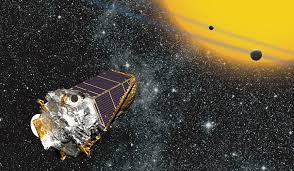by Ivan Komarov, Wellington College, Berkshire
While Copernicus and Galileo often receive the credit for their ideas, it was Johannes Kepler (1571-1630) who discovered and demonstrated that the Earth orbits the Sun. In his 1609 work, “The New Astronomy”, Kepler destroyed the Aristotelian cosmography of perfect forms and unknowable causes, forever changed man’s sense of his place in the Universe, helped launch the scientific revolution, and identified problems which would motivate the development of calculus. Simply, this man is a genius. Kepler discovered the physical astronomy which fixed many problems for other important 17th-century “world-system builders”, the most famous of whom was Newton. In this essay, I am particularly going to be looking at Kepler`s discovery of the three major laws of planetary motions:
So, what is the planetary motion, and how did Kepler discover it? Like many philosophers of his time, Kepler believed that the Universe’s perfect shape was the circle, and thus the planets’ orbits must be circular. For many years, he struggled to make Brahe’s observations of the motions of Mars match up with a circular orbit (Kepler was the assistant of Brahe, a wealthy astronomer, who has asked Kepler to define the orbit of Mars. Brahe had collected a lifetime of astronomical observations, which, on his death, passed into Kepler’s hands). Eventually, though, Kepler had noticed that an “imaginary” line drawn from a planet to the Sun swept out an equal area of space in equal times, despite of where the planet was on its orbit. If you draw a triangle from the Sun to a planet’s position at one point in time and its position at a fixed time later, the area of that triangle is always the same, anywhere on the orbit.
This discovery (which became Kepler’s second law of orbital motion) led to discovery of what became Kepler’s first law: “All planets orbit the sun in a path that resembles an ellipse, with the sun being located at one of the foci of that ellipse.”
Kepler’s third law shows that there is a precise mathematical relationship between a planet’s distance from the Sun and the amount of time it takes for it to circle around the Sun. It was this law that later had inspired Newton, who came up with three laws of his own to explain why the planets move as they do.
So, in conclusion why are Kepler`s laws so important? Most importantly, they were a big jump in under-standing planetary motion. Copernicus theorized circular orbits, however the observed motion did not quite match his theories. Kepler theorized that planets follow elliptical orbits, a radical theory which turns out to not only closely match Copernicus`s observed motion, but which also supported Sir Isaac Newton’s later development of the laws of motion and gravitation. Kepler`s laws and formulae still form the basis for all types of astronomical calculations used in the modern world, such as calculations important to send space-ships into the space and maybe even later to the other planets. To summarize, his discovery of these laws was incredibly (and still is) very important for our improvement of understanding the space.





